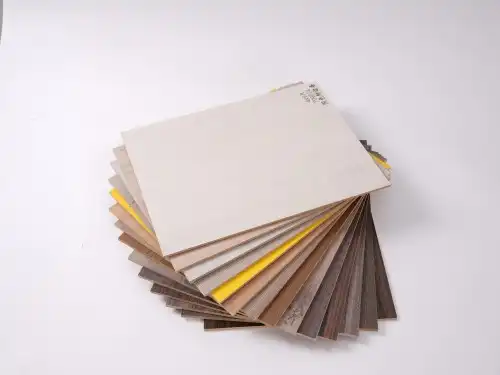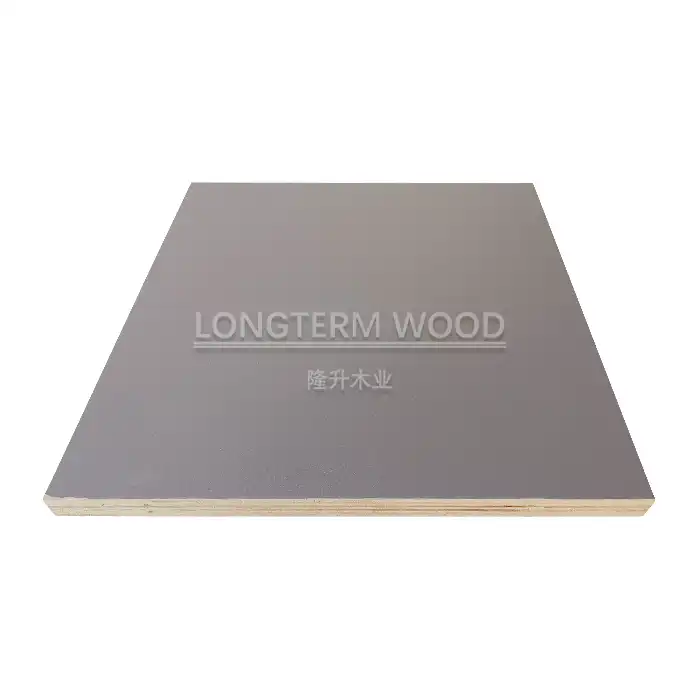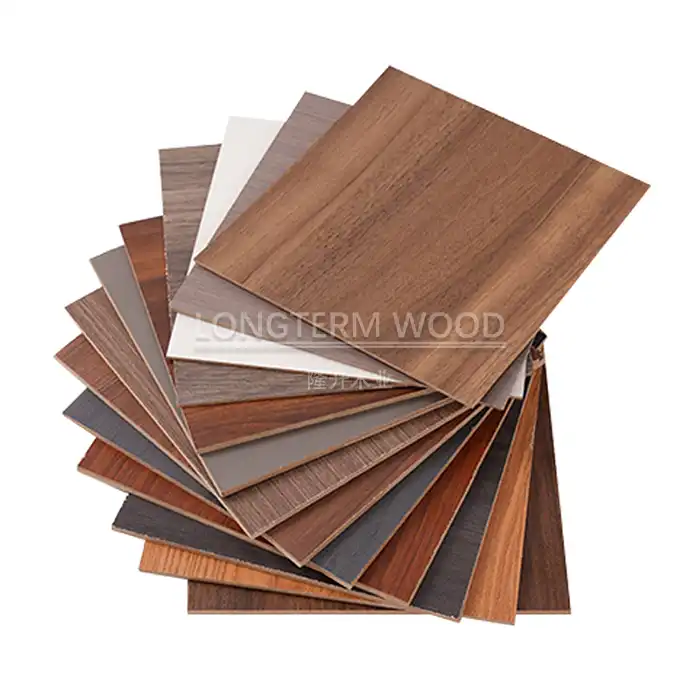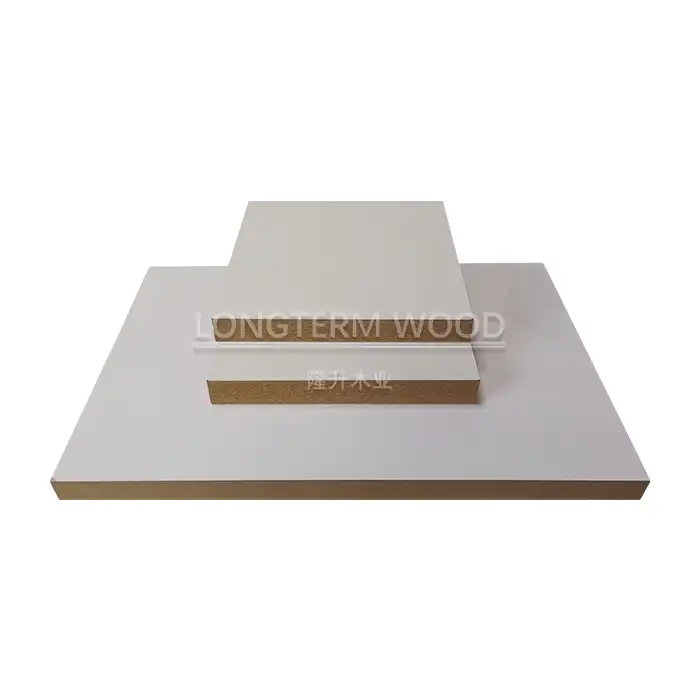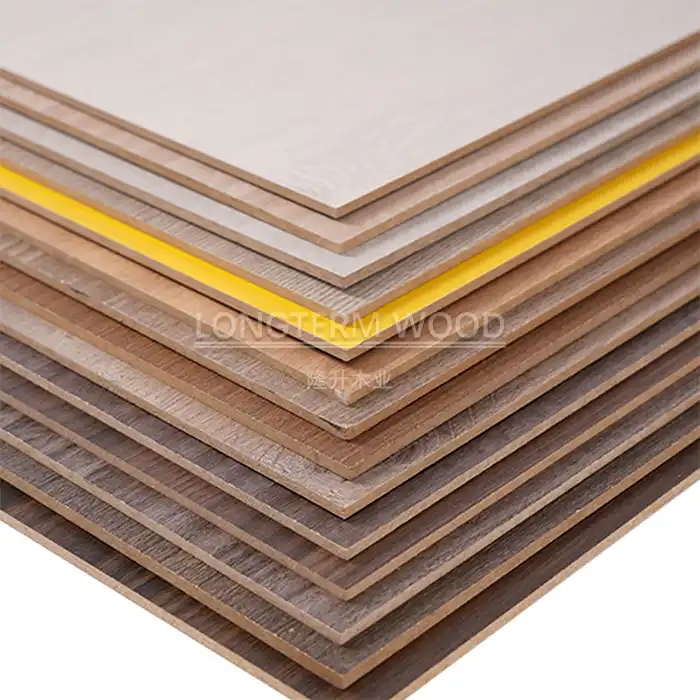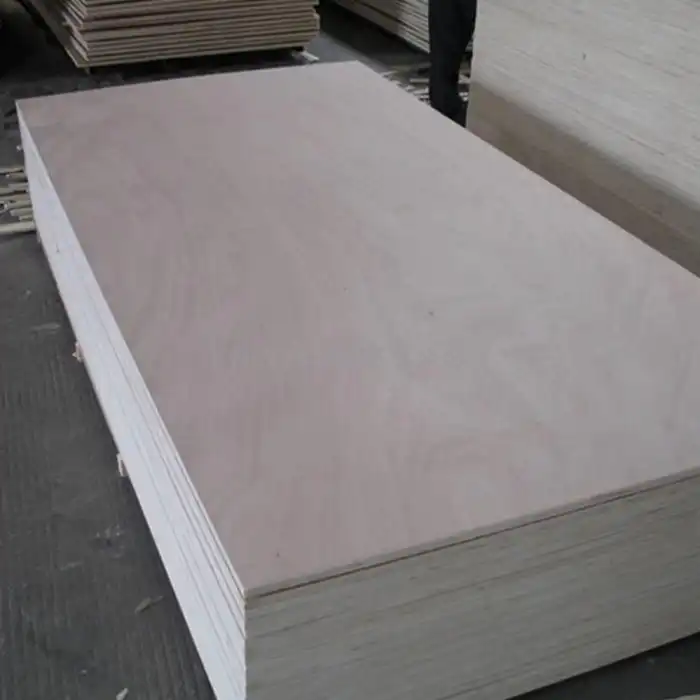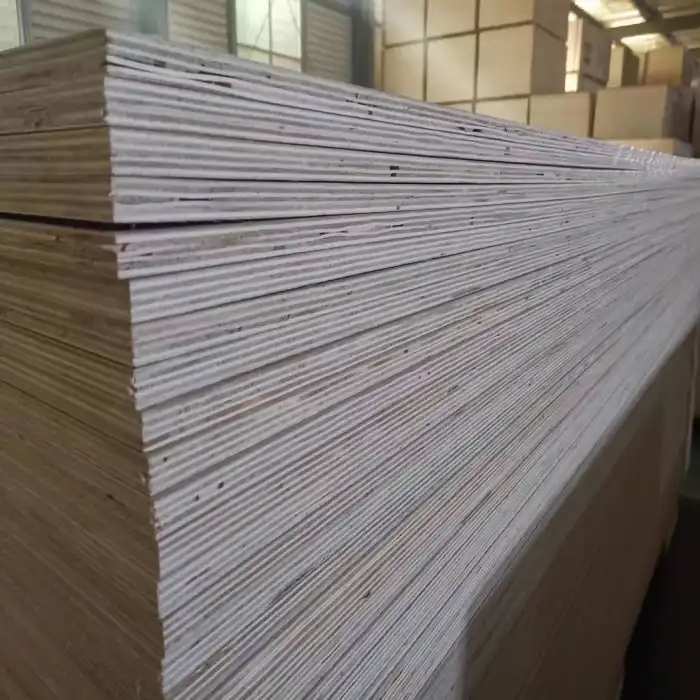
Why Choose Melamine Plywood for Retail Store Fixtures?
2025-05-15
In today's competitive retail environment, store fixtures play a crucial role in not only displaying merchandise effectively but also in creating a memorable shopping experience. When it comes to selecting materials for these fixtures, melamine plywood stands out as an exceptional choice that combines aesthetics, durability, and cost-effectiveness. Melamine plywood offers retail store owners a perfect balance of visual appeal and practical functionality, making it increasingly popular in commercial interior design. Its versatility allows for creative display solutions while maintaining structural integrity under the constant wear and tear of busy retail environments. As we explore the numerous advantages of this remarkable material, it becomes clear why industry professionals consistently recommend melamine plywood for retail store fixtures.
The Superior Benefits of Melamine Plywood in Retail Environments
Exceptional Durability for High-Traffic Areas
Melamine plywood represents a significant advancement in construction materials, particularly for retail environments that experience constant customer traffic and merchandise movement. The durability of melamine plywood stems from its unique manufacturing process, where melamine resin is thermally fused to engineered wood cores under high pressure. This creates a surface that is remarkably resistant to scratches, stains, impacts, and everyday wear. Unlike conventional wooden materials that may show signs of deterioration quickly, melamine plywood maintains its pristine appearance even after years of use in busy retail settings. The protective melamine layer acts as a shield against moisture, preventing warping and swelling that can compromise structural integrity. This exceptional durability translates to reduced maintenance costs and extended fixture lifespans, making melamine plywood an intelligent investment for forward-thinking retailers who understand that quality fixtures contribute significantly to overall store presentation and customer experience. Furthermore, the dimensional stability of melamine plywood ensures that shelving units, display cases, and countertops retain their precise measurements and alignment, preventing the unsightly gaps and uneven surfaces that can develop with lesser materials over time.
Design Versatility for Brand-Consistent Aesthetics
The remarkable design flexibility of melamine plywood makes it an ideal choice for retailers seeking to create cohesive, brand-aligned store environments. Melamine plywood is available in an extensive range of colors, textures, and finishes—from realistic wood grains to solid colors, from high-gloss to matte surfaces, and from smooth to textured finishes. This variety allows retail designers to perfectly match store fixtures with established brand color schemes and design languages without compromise. The consistency of melamine plywood's appearance across large production runs ensures that fixtures installed in different store locations maintain the same look and feel, contributing to brand recognition and customer comfort. Beyond color and texture options, melamine plywood can be easily machined, cut, and finished to create custom shapes, curved surfaces, and innovative display solutions that differentiate a retail space from competitors. The material's adaptability supports both contemporary minimalist designs and more traditional or elaborate aesthetics, making it suitable for luxury boutiques, mass-market retailers, and specialty stores alike. Additionally, the uniform surface of melamine plywood provides an excellent backdrop for additional branding elements such as logos, signage, and promotional graphics, further enhancing its value in creating distinctive retail environments that resonate with target customers.
Cost-Effectiveness Without Quality Compromise
In the realm of retail fixture materials, melamine plywood offers an outstanding balance between quality and affordability that savvy retailers find difficult to overlook. The manufacturing efficiency of melamine plywood results in a product that delivers premium performance characteristics at a significantly lower price point than solid wood or high-end composite materials. This cost advantage extends beyond the initial purchase price to include reduced installation expenses (due to the material's consistent quality and workability) and lower long-term maintenance costs (thanks to its superior durability). For retailers operating multiple locations or undergoing frequent store refreshes, melamine plywood's cost-effectiveness multiplies across each implementation, resulting in substantial savings without sacrificing the professional appearance consumers expect. The material's longevity further enhances its economic value proposition, as melamine plywood fixtures typically maintain their structural integrity and visual appeal for years, postponing replacement cycles and allowing retailers to allocate resources to other business priorities. The dimensional stability of melamine plywood also minimizes waste during fabrication and installation, contributing to cost savings in material usage and labor hours. Additionally, melamine plywood's resistance to damage reduces the frequency of fixture repairs and replacements, preventing the disruption to sales activities that can occur when fixtures must be taken out of service for maintenance. For retail businesses operating with tight margins or those seeking to maximize return on investment, melamine plywood represents a prudent choice that delivers exceptional value throughout the fixture lifecycle.
Practical Applications of Melamine Plywood in Modern Retail Design
Display Shelving and Product Presentation Solutions
Melamine plywood has revolutionized retail display systems with its perfect combination of structural integrity and aesthetic appeal. In the competitive retail landscape, effectively showcasing merchandise can significantly impact consumer purchasing decisions, making the quality of display fixtures a critical business consideration. Melamine plywood shelving units offer retail designers the ideal foundation for creating eye-catching product presentations that enhance visual merchandising strategies while withstanding the demands of daily retail operations. The material's exceptional load-bearing capacity enables the creation of shelving systems that safely support heavy merchandise without sagging or warping, maintaining clean, professional lines that contribute to an organized store appearance. The smooth, consistent surface of melamine plywood provides an ideal backdrop that allows products to stand out visually, rather than competing with the fixture itself. This characteristic is particularly valuable for retailers of premium merchandise, where presentation quality directly influences customer perception of product value. The versatility of melamine plywood enables the creation of modular display systems that can be easily reconfigured to accommodate seasonal merchandise changes or evolving store layouts, offering retailers the flexibility needed to keep store environments fresh and engaging. Additionally, the moisture-resistant properties of melamine plywood make it suitable for displaying products that may involve liquid elements, such as cosmetics, perfumes, or food items, without risk of damage to the fixture structure. Sophisticated retail environments often incorporate custom-designed melamine plywood display units that integrate lighting systems, adjustable components, and specialized product holders, creating multifunctional fixtures that optimize available floor space while enhancing the shopping experience.
Custom Checkout Counters and Service Stations
The checkout area represents a critical touchpoint in the customer journey, serving as both a functional transaction point and a final opportunity to reinforce brand identity. Melamine plywood has emerged as a preferred material for crafting custom checkout counters and service stations that balance operational requirements with design considerations. The exceptional durability of melamine plywood ensures these high-traffic fixtures withstand constant use, including the impact of shopping bags, purses, and point-of-sale equipment that can quickly deteriorate lesser materials. The material's resistance to scratches and stains preserves the professional appearance of checkout areas, which customers often subconsciously associate with the overall quality of the business. Melamine plywood's versatility allows for the incorporation of ergonomic design elements that enhance employee comfort during long shifts, potentially increasing productivity and improving customer service quality. The material easily accommodates integrated technology solutions, including cable management systems, embedded payment terminals, and concealed storage for electronic equipment, creating streamlined workstations that facilitate efficient transactions. The extensive color and finish options available with melamine plywood enable designers to create checkout counters that serve as statement pieces, reinforcing brand identity through custom colors, logos, or distinctive design elements. The material's workability facilitates the creation of counters with accessible heights and features that comply with ADA requirements, ensuring the retail environment welcomes all customers. Furthermore, the dimensional stability of melamine plywood ensures that drawer slides, cabinet doors, and other moving components continue to operate smoothly over time, maintaining functionality in these mission-critical retail fixtures.
Wall Systems and Perimeter Merchandising Fixtures
The perimeter space in retail environments represents prime merchandising real estate that can significantly influence store productivity and profitability when properly utilized. Melamine plywood wall systems and perimeter fixtures offer retailers sophisticated solutions for maximizing this valuable space while maintaining design coherence throughout the store. The structural strength of melamine plywood supports the creation of floor-to-ceiling merchandising systems that effectively utilize vertical space, increasing product display capacity without consuming additional floor area. These systems can incorporate adjustable components such as shelving, hanging rods, slat walls, and specialized display modules that can be reconfigured to accommodate changing inventory or seasonal promotional requirements. The moisture-resistant properties of melamine plywood make it an ideal material for perimeter fixtures in environments where humidity fluctuations occur, such as entrances, windows, or areas adjacent to HVAC systems, preventing the warping or deterioration that can affect other materials in these challenging locations. The exceptional dimensional stability of melamine plywood ensures that large wall installations maintain their precise alignment over time, preserving the professional appearance that communicates quality to customers. Sophisticated melamine plywood wall systems often incorporate integrated lighting solutions that highlight merchandise, create ambiance, and guide customer flow through the retail space, enhancing both the functionality and atmosphere of the store environment. The material's clean, consistent surface provides an ideal backdrop for branded graphics, digital displays, or decorative elements that reinforce the retailer's visual identity and create immersive shopping experiences. Additionally, melamine plywood wall systems can be designed with concealed storage areas that allow for efficient inventory management, keeping additional stock accessible while maintaining an uncluttered sales floor that encourages exploration and discovery.
Technical Considerations for Implementing Melamine Plywood Fixtures
Quality Grades and Performance Specifications
When implementing melamine plywood fixtures in retail environments, understanding the various quality grades and performance specifications is essential for selecting materials that will meet specific application demands. High-quality melamine plywood is manufactured with precision-engineered core materials—typically multi-layered plywood, medium-density fiberboard (MDF), or particleboard—that provide the foundation for structural integrity and dimensional stability. The density and composition of these core materials significantly impact the fixture's weight-bearing capacity, screw-holding strength, and resistance to deflection under load, making core selection a critical consideration for different fixture applications. The melamine surface layer's thickness and composition also vary across quality grades, with premium products featuring thicker, more durable melamine films that offer enhanced resistance to abrasion, impact, and chemical exposure. Retailers should evaluate these characteristics based on the anticipated wear patterns and environmental conditions of specific store locations. Industry standards such as E1 and E0 formaldehyde emission classifications provide important guidance for selecting melamine plywood that maintains healthy indoor air quality, a consideration of increasing importance to both consumers and retail employees. The edge treatment of melamine plywood significantly impacts both aesthetics and durability, with options ranging from basic edge banding to advanced polymer edge treatments that create seamless, waterproof barriers protecting the core material from moisture penetration. Sophisticated retail fixtures often require melamine plywood with enhanced fire-resistant properties, particularly in high-risk environments or jurisdictions with stringent building codes. Additionally, retailers operating in multiple regions should consider materials certified to international standards that ensure consistent quality across their entire store network. Understanding these technical specifications enables retail designers to select melamine plywood products that balance performance requirements with budget considerations, ensuring fixtures that maintain their appearance and functionality throughout their intended service life.
Fabrication and Installation Considerations
The success of retail fixtures depends not only on material selection but also on proper fabrication and installation techniques specific to melamine plywood. Professional fabrication begins with precise cutting using specialized equipment that minimizes chipping and creates clean edges that contribute to fixture longevity and appearance. The distinctive composition of melamine plywood requires specific tooling—particularly carbide-tipped or diamond-tipped cutting implements—that maintain sharp, clean cuts through both the melamine surface and the core material. Edge treatment represents a critical fabrication step, as exposed edges are vulnerable points that can allow moisture penetration if not properly finished with appropriate edge banding or sealing techniques. The selection of appropriate fastening systems significantly impacts fixture durability, with specialized hardware such as confirmat screws, cam connectors, and threaded inserts providing superior holding power in melamine plywood compared to standard wood screws. Professional fabricators understand the importance of pre-drilling holes at precise diameters and depths to prevent splitting or surface damage during assembly, particularly in areas subject to frequent adjustment or disassembly. Installation planning must account for the weight characteristics of melamine plywood, ensuring that wall-mounted fixtures have adequate structural support and that freestanding units have proper balance to prevent tipping hazards in busy retail environments. Temperature and humidity acclimation represents another important consideration, as allowing melamine plywood components to adjust to the store environment before final assembly minimizes the risk of subsequent warping or joint separation. For fixtures requiring on-site assembly, careful coordination of component identification and clear assembly documentation streamlines the installation process and ensures consistent results across multiple retail locations. Additionally, establishing appropriate maintenance protocols—including recommended cleaning products and techniques—extends fixture life and preserves the professional appearance that influences customer perceptions of the retail brand.
Sustainability and Environmental Compliance
As retail brands increasingly emphasize corporate social responsibility, the environmental attributes of store fixtures have become important considerations in material selection. Melamine plywood offers several sustainability advantages that align with modern retail environmental initiatives. Responsible manufacturers produce melamine plywood using cores derived from sustainably managed forests or recycled wood content, reducing the environmental footprint compared to fixtures constructed from virgin hardwoods or non-renewable materials. The manufacturing process for melamine plywood typically consumes less energy than alternative materials like solid surface products or metal fixtures, contributing to reduced carbon emissions across the fixture lifecycle. Leading melamine plywood producers adhere to stringent formaldehyde emission standards, with many products achieving E1 or even more stringent E0 classifications that ensure healthy indoor air quality for both customers and retail employees. The exceptional durability of melamine plywood extends product lifecycles, reducing the frequency of fixture replacement and the associated resource consumption and waste generation. When fixtures eventually require replacement, melamine plywood components can often be repurposed or recycled, diverting material from landfills and supporting circular economy principles. Retailers can further enhance their sustainability profile by selecting melamine plywood products certified by recognized environmental programs such as the Forest Stewardship Council (FSC) or the Programme for the Endorsement of Forest Certification (PEFC), providing third-party verification of responsible sourcing practices. The dimensional stability and precise manufacturing of melamine plywood minimize waste during fabrication compared to natural wood products with inherent defects and variations, improving material efficiency throughout the fixture production process. Additionally, melamine plywood's resistance to moisture and wear reduces the need for chemical treatments, refinishing, or replacement, limiting the introduction of additional chemicals into the retail environment. For retailers committed to transparent sustainability reporting, selecting melamine plywood fixtures with documented environmental attributes supports accurate calculation of store construction and operation carbon footprints.
Conclusion
Melamine plywood stands as the superior choice for retail store fixtures, combining exceptional durability, design versatility, and cost-effectiveness. Its resistance to wear, moisture, and daily challenges of retail environments ensures fixtures maintain their professional appearance while delivering outstanding long-term value. For retailers seeking to create distinctive, functional, and sustainable store environments, melamine plywood offers unmatched advantages. Contact Linyi Longterm Wood Industry Co., Ltd. today at howie@longtermwood.com to discover how our premium melamine plywood solutions can transform your retail space with our 15+ years of expertise, stringent quality control, and personalized service.
References
1. Johnson, R. & Smith, T. (2023). Sustainable Materials in Modern Retail Design. Journal of Commercial Interior Architecture, 45(2), 112-128.
2. Zhang, L., Wang, F., & Chen, H. (2022). Comparative Analysis of Engineered Wood Products for Commercial Applications. International Journal of Wood Science, 18(3), 245-260.
3. Miller, A. (2023). Retail Environment Design: Materials Impact on Customer Experience. Retail Design Quarterly, 29(1), 78-92.
4. Thompson, D. & Davis, S. (2023). Cost-Benefit Analysis of Premium Construction Materials in Commercial Settings. Journal of Construction Economics, 12(4), 315-330.
5. Patel, N. & Rodriguez, C. (2022). Environmental Compliance in Retail Fixture Manufacturing. Sustainable Business Practices, 7(2), 189-204.
6. Williams, K. (2023). Innovative Applications of Melamine-Based Products in Commercial Interiors. Commercial Design Review, 33(2), 156-170.







